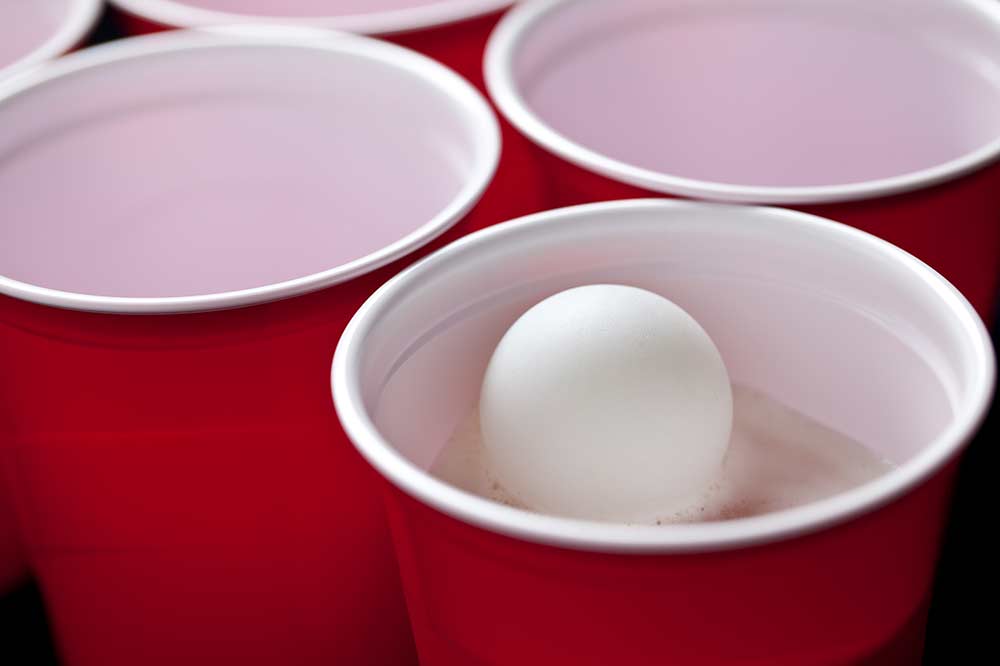The Health Risks of Drinking Games

And to the average young person looking to party, blow off steam or just fit in, such games may seem like an innocuous form of fun. What many are not aware of, however, are the dangers. These short and long-term health risks serve as a warning regarding the serious and potentially life-threatening consequences of adolescent drinking rituals, as do the links between drinking games and alcohol abuse and addiction. What follows is everything teens and parents should know.
Drinking Games – Definition and Examples
Broadly defined, drinking games are social activities that make alcohol consumption the main focus. These games run the gamut and proliferate in the hundreds, their roots stretching all the way back to the ancient Greeks, but one unifying feature tends to be the implicit assumption that participants are not really having fun unless they are imbibing large amounts of alcohol or at least putting themselves at risk of this prospect.
Below are some of the more familiar, garden-variety drinking games that you’ll see on college campuses or in various high school settings.
Common drinking games at college and high-school parties:
- Beer Pong – Teams take turns throwing ping pong balls into cups. When a ball lands in the opposing team’s cup, the opposing team must consume the contents of the cup, with the game proceeding until all of the cups have been drunk.
- Flip Cup – Teams of equal number compete to see which team is faster when each member in a row downs a cup of beer and then flips the cup.
- Quarters – Players take turns trying to flip quarters into a container, such as a shot glass. In one common variation of this game, the player to the left of the person who successfully flips the quarter into the shot glass has to drink the contents of the shot glass.
Health Risks of Drinking Games and Binge Drinking
Drinking games can pose both immediate and long-term dangers to one’s mental, physical and behavioral health. These can range from relatively minor medical issues to serious, potentially life-threatening health concerns, depending on the level and frequency of the drinking involved.
A more obvious and immediate risk is intoxication from consuming large amounts of alcohol in a relatively short period, also known as “binge drinking”. The direct consequences to one’s health can range from confusion, slurred speech and memory impairment, to respiratory problems, coma and death.
Intoxication also in turn raises the chances of engaging in other risky and potentially harmful behaviors, like engaging in unprotected sex with strangers or driving under the influence. Indeed, the same University of Indiana researchers cited above found a correlation between playing drinking games and engaging in other problem behaviors with risky health consequences.
The health risks posed by binge drinking have been thoroughly documented in multiple reports compiled by the National Institute on Alcohol Abuse and Alcoholism.
Health risks posed by drinking games:
- Physical injuries (from alcohol-related falls, accidents or violence)
- Liver disease
- Central nervous system disease
- Blackouts
- Alcohol poisoning
- Rape or sexual assault
- Unintended pregnancy
- Sexually transmitted diseases, including HIV/AIDS
- Death from drunk driving
In the last case, death from drunk driving, alcohol abuse reportedly accounts for almost half of all motor fatalities, according to a national survey of college binge drinking by researchers at Harvard. Car and motor fatalities are the leading cause of death among young Americans.
The same survey recorded the various health and behavioral consequences that college students who binge drink reported experiencing.
Other health and behavioral consequences due to alcohol:
- Having a serious argument or quarrel
- Sleep problems
- Interruptions in studies
- Experiencing property damage
- Having to care for a drunk peer
The Link Between Drinking Games and Alcohol Abuse
Regular participation in drinking games is a form of alcohol abuse and may indicate the presence of a diagnosable substance use disorder (SUD). A study in 2016 found that high school students who took part in drinking games were more likely to engage in high-risk drinking in college.
Alcohol addiction, while very treatable, poses still other serious health risks when left untreated. In addition to being more susceptible to diseases like pneumonia and tuberculosis, heavy drinkers are at greater risk of contracting certain cancers, including mouth, esophagus, liver, throat and breast cancer.
Other long-term health risks of alcohol abuse can include
- Cardiomyopathy – Stretching and drooping of heart muscle
- Arrhythmias – Irregular heart beat
- Stroke
- High blood pressure
- Pancreatitis
- Fatty liver disease
- Alcoholic hepatitis
- Fibrosis
- Cirrhosis of the liver
- Wernicke-Korsakoff syndrome

